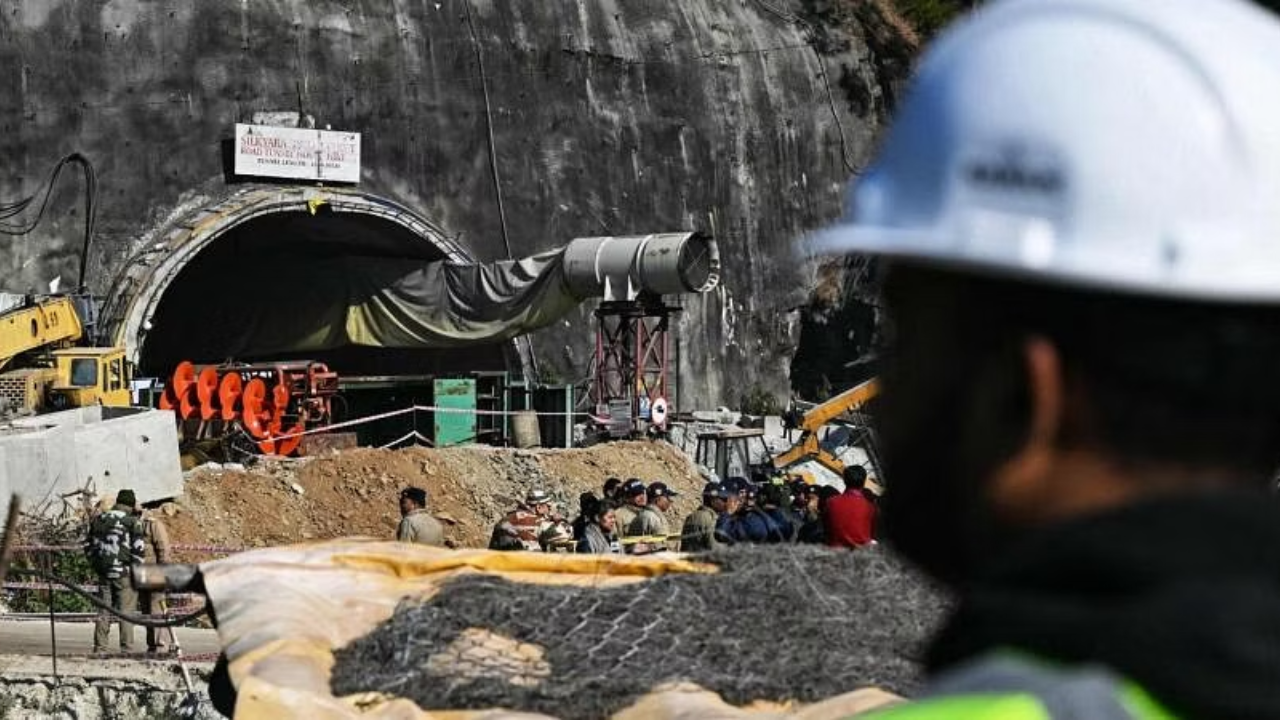The Atal Tunnel in Himachal has an escape tunnel under the main one. The escape tunnel can be opened every 400 metres.
NEW DELHI
Lessons learnt from the Silkyara tunnel rescue operation are going to form the foundation of national tunnel rescue guidelines that the National Disaster Management Authority has started framing.
Lt Gen Syed Ata Hasnain (Retd), member of NDMA, said the guidelines would be based on the discussions with all stakeholders. The draft guidelines—that will be the first for the country as no such norms exist at the moment—shall be circulated for inviting suggestions.
Work at the Silkyara tunnel project is likely to remain suspended for a few months as multiple agencies conduct a probe into the collapse, a safety audit and plan the repair of the damaged portion.
The geological report of the tunnel site that had run into an alleged controversy is likely to be reviewed again, said an official of the construction company at the site.
The report had indicated that there was hard rock at the point where the tunnel was to be built, however, there was a note of caution that the rocks on Silkyara side were weaker than on the Barkot side. Threats of possible “slip circular failures” were also highlighted.
The Silkyara tunnel on Dharasu-Yumunotri highway is being built in an EPC (engineering, procurement and construction) mode, under which the EPC contractor is responsible for the design. As per officials at the site, a provision of separation wall has been provided at the centre of the carriageway, along with egress openings at an average interval of 565 metres for vehicular crossover. For pedestrian escape a cross passage has been provided at an average interval of 300 metres.
Meanwhile, a safety audit of 29 under-construction tunnels in the country has started, said officials of the Ministry of Road and Transport. The total length of these tunnels is around 79 km and 12 of these are situated in Himachal Pradesh, 6 in J&K, 2 each in Maharashtra, Odisha and Rajasthan and one each in Madhya Pradesh, Karnataka, Chhattisgarh, Uttarakhand and Delhi.
The Bureau of Indian Standard (BIS), which is responsible for framing and updating the building code, has speeded up the framing of the new building code that would include escape routes as a compulsory component of construction standards for tunnels and underground activities.
The new proposed standards for tunnel construction would incorporate a compulsory provision for escape tunnels and an approach edit—which is a smaller tunnel running parallel to the main tunnel—with an opening at every two km.
P.C. Nawani, who heads BIS committee on geological investigation and subsurface exploration, said till now there was no compulsion for tunnel construction contractors to build an approach edit or a passage to safety every 2 km of the tunnel. The new draft guidelines will mandate all tunnel projects to have an escape tunnel, he said.
Interestingly, the Atal Tunnel in Himachal, which was built on a European pattern, has an escape tunnel under the main one. The escape tunnel can be opened every 400 metres. Technicians aware of the Silkyara project said work on it began in 2018, when there was no compulsion for the contractor to build an approach edit. The standards for tunnelling were changed in 2019, which said that for any tunnel longer than 1.5 km another parallel escape tunnel would have to be built compulsorily.

